To help launch the new Virtual Wine Fair service Lawrence Francis has linked up with The Buyer to offer a limited number of free audio recordings to producers reading this article. Click here to sign up.
You have come up with a new innovative idea to help producers remotely bring their wines to life and tell their story online – what are you looking to do?
The Virtual Wine Fair helps wine regions and producers share their unique stories and bring their wines to life using audio descriptions. It consists of a website featuring the audio descriptions alongside traditional resources such as tech sheets and bottle pictures. The combined resources are made available to the wine trade online, 24/7 allowing them to engage in a self-led exploration of participating wineries at their convenience.
It’s an effective, scalable way for producers to extend contact time before and after in-person events. For example, if you’re hosting a masterclass in London, creating an entry for the Virtual Wine Fair in advance means you can send this to:
- Your full list beforehand, in order to increase registration.
- Registered attendees in advance, in order to increase attendance.
- No-shows and those who couldn’t attend afterwards, in order to share knowledge they otherwise would have missed.
- Attendees afterwards, giving them correct and engaging reference material to use for content creation, sales or training.
Where did the idea for this come from?
A couple of things coming together. I’m probably best known as the producer and host of Interpreting Wine podcast. I’ve broadcast over 200 producer interviews and use a signature model, WINE360, to help guests articulate the story behind the wine so they really stand out. Podcasts continue to grow in popularity and still have high levels of engagement with younger audiences who are increasingly difficult to reach via other channels.
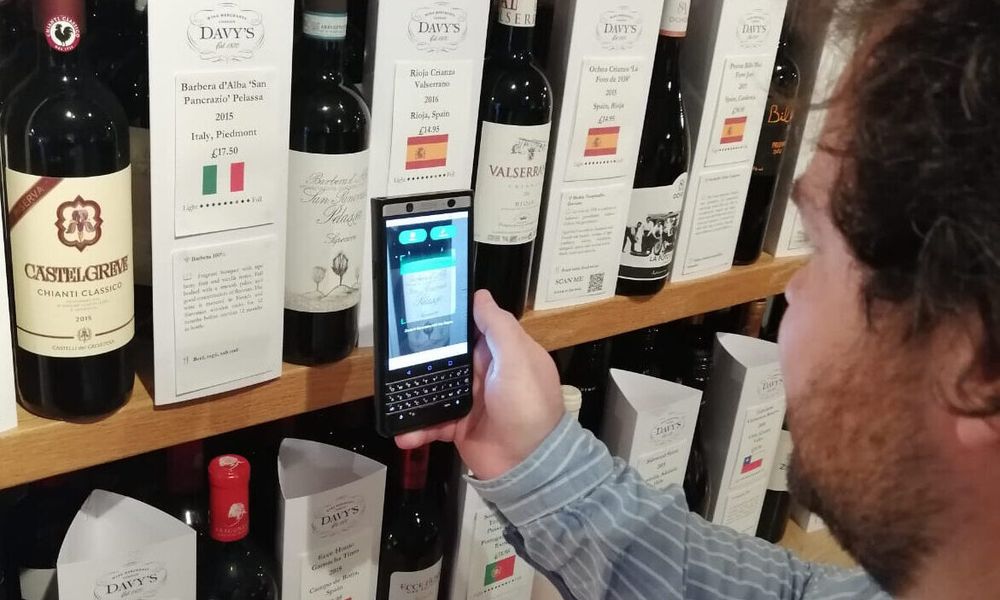
Lawrence Francis is taking an idea first started whilst working at Davy’s Wine Merchants to set up Virtual Wine Fairs where producers can talk about themselves and their wines to interested wine buyers
The second input was an idea I spearheaded when working at Davy’s Wine Merchants. This connected producers and customers at every stage of the buying cycle using audio descriptions of the estate and the wines. These were made available to consumers on the webshop and next to bottles in the physical wineshop via QR code.
I always wanted to take the idea further and have been discussing producing on-demand tasting for a while now. I’m moving this forward now as I’m still hearing that footfall at in-person events hasn’t yet returned to pre-pandemic levels.
Another headwind for events is that in cities like London, events often clash with one another, and we inevitably miss out on a lot of great learning and connection opportunities. The Virtual Wine Fair is my current best thinking about how to increase the effectiveness and efficiency of in-person events to benefit both sides of the table.
How does it work – talk us through how you would work with a producer on a project?
The big idea is to create a dedicated microsite that hosts information usually exchanged at an in-person fair or tasting. Winery background, wine descriptions and technical information. Everything except the wine itself.
For a producer to take part there are two steps. Firstly they complete two online questionnaires. The first questionnaire covers production and their goals for the UK market. The second questionnaire unpacks their Six Wine Stories, a model I’ve used for years to draw out the full producer story.

Francis works with producers to create what he sees as the six steps you need to cover to tell your story
The second step is to record the wine descriptions using the recording instructions I send them. I’ve found the best recordings are made in a calm, low-stress environment. This captures their authentic voice, without the pressure of a live audience.
At the final stage, I edit recordings for clarity and flow and boost quality to broadcast levels. The recordings are then packaged onto a simple, user-friendly website. This allows virtual visitors to play the audio, while reading winery descriptions or tech sheets. This is particularly effective as information that’s read and listened to is remembered more easily.
Once the entry is online it can be accessed in a number of ways. Producers can share a dedicated link via email or social media. I also provide participants with a QR code for their entry, which can be embedded on booklets, tasting sheets and in other physical locations.
Who handles the recording of the audio message and tasting note?
Where possible I’d recommend the producer or principal does these. Capturing the story from the person who has their feet on the ground and has first-hand experience of making the wine.
There have also been instances where the importer have done recordings. Perhaps if there is an issue with language, or during harvest.
What do you hope the recordings can achieve?
Providing producer information in this way will help the sales process. Research shows that before making a purchase, we need multiple touch points over time to encourage familiarity and ultimately purchase decisions. It can be difficult to drive that necessary engagement once an in-person event is over. Focus from both parties has often moved on and unless engaging resources are prepared in advance there usually isn’t time to create them afterwards.
Getting prepared ahead of time, the Virtual Wine Fair can be accessed both before and after in-person events. Potential customers can ‘break the ice’ with the brand in advance. They arrive with a much better understanding and things can advance that much quicker in-person or afterwards.
In addition to direct sales I think there’s huge value for brand building. This is a low-risk, low-cost way for wineries to experiment with audio. Most wineries still don’t use this channel. When one considers that audio and podcast audiences are younger and more engaged than most other channels, it becomes a ‘no-brainer’.
Which type of producers do you think an audio message can be really effective?

Lawrence Frances has worked closely with producers to tell their stories through his Interpreting Wine podcast
The key ingredient for a strong audio description is passion, sincerity and knowledge. As long as the guests can make themselves clearly understood, they do not need perfect English. It is more authentic to hear about a region from a producer with a local accent, rather than from someone speaking on their behalf. That being said the format is probably easier for non-native speakers as there is more structure than a podcast conversation.
I would also highlight producers who are based far away from their markets. I can think of several New Zealand, Australian and North American producers who would really shine in this format. And when they do travel to the markets they can use this resource to increase the impact of that huge investment of time and money.
What sort of impact have you had with the recordings you have made?
It’s still relatively early days, but producer and region feedback has been positive. My impression is that both marketing teams and winemakers see the benefit.
While editing entries, I’ve also used these personally to increase my wine knowledge. A great example is Nova Scotia, where I’ve produced a number of recordings. I’ve never visited the region or tasted many of these wines, but the information is so engaging I’ll be paying a lot more attention to these wines in future.
Who do you see as your target market?
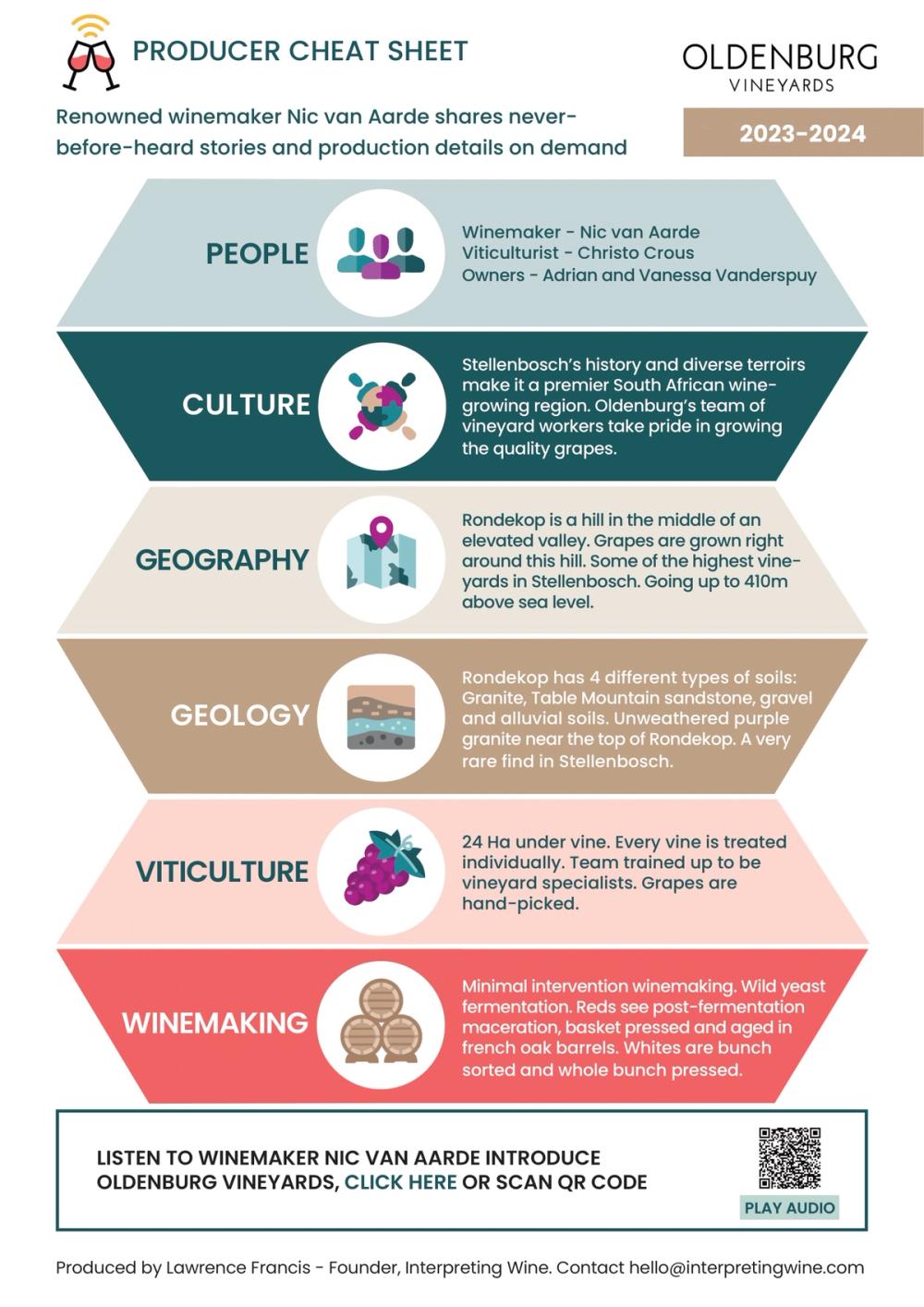
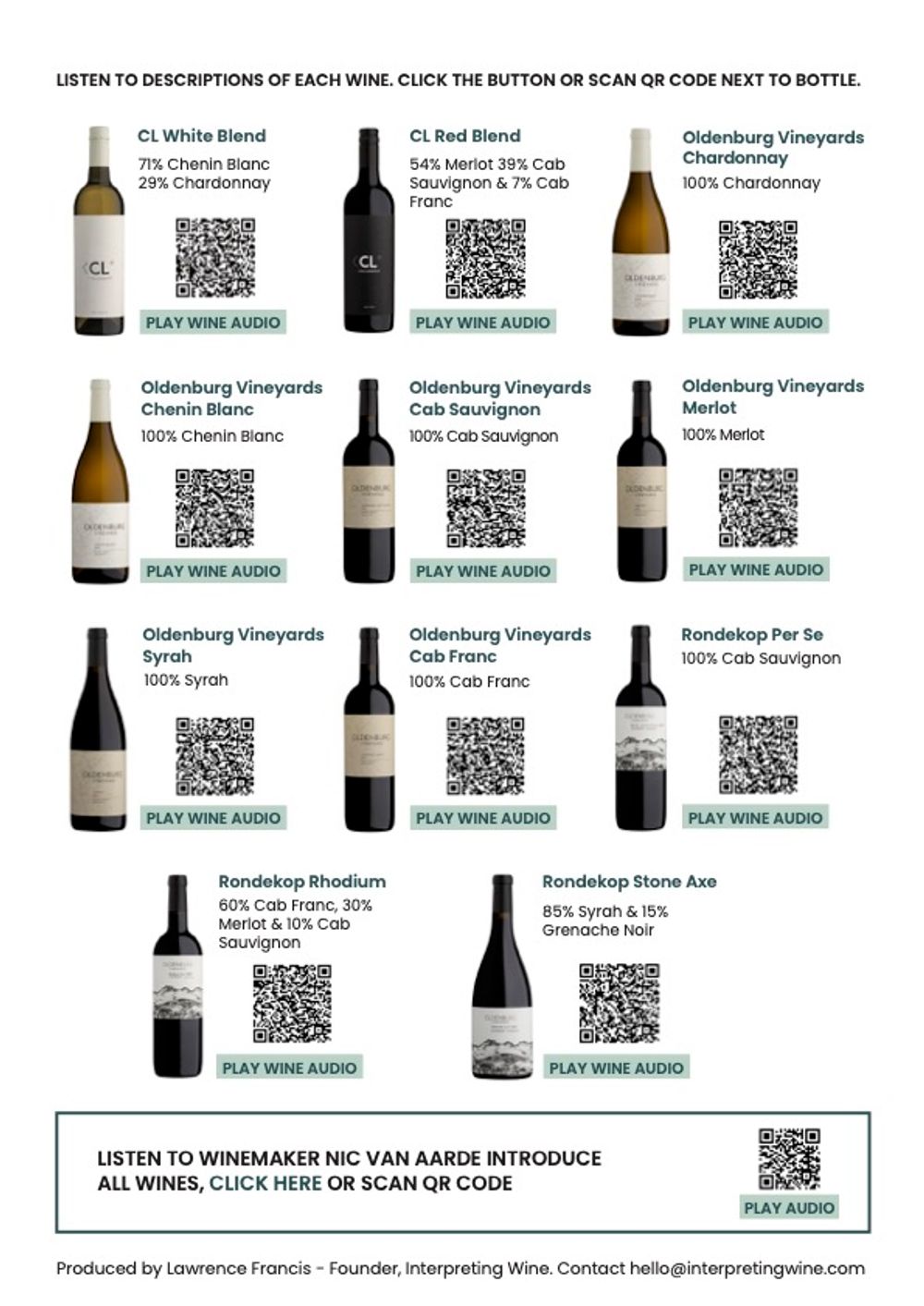
First and foremost the time-poor wine industry professional. An increasing number of whom can only visit in-person events briefly, or have to miss them altogether. Due to other events or work demands. I think they could benefit from having engaging and detailed quality content like this to refer back to afterwards.
The non-trade wine enthusiast would also benefit. Due to most events taking place during working hours and strict guest lists, it means that most consumers can’t attend tastings and meet producers. I can see this being a great way to connect a non-trade audience with producers in a novel and engaging way.
Online audio fits the bill as the medium, as it can be consumed in many more situations than video or the printed word can.
You could potentially have the audio note available for buyers to listen to whilst at a trade tasting?
Yes. This is something I’ve tried before. Last year I worked with Humble Grape to produce recordings for one of their hero producers, Von Winning, which were accessible via QR code at the tasting table as the wines were being poured.
For me, on-site usage is best suited to the self-pour areas of wine tastings. Self-service areas are great as they allow attendees to taste wines quickly. However they often lack the personal touch and there’s only so much information that can be displayed next to each wine. Having audio-enabled QR codes next to bottles would deliver the best of both worlds. Allowing visitors to taste quickly, while still being guided by the producer.
How are you making money from the idea?
Right now I’m offering individual producers the chance to create an entry for free, so they can experience the benefit of a Virtual Wine Fair first-hand.
I offer a more advanced version called STEM, which acts as a virtual wine fair for entire regions, groups or importers. Meaning the number of wineries is higher and presented under a cohesive banner. It also offers additional functionality, such as appointment booking, automated content delivery, warm-up emails in advance of meetings and post-meeting communication.

Lawrence Francis has built up a strong following through his Interpreting Wine podcast
Information sent can be personalised, so a sommelier would have a different experience to a buyer. The options for personalisation are almost endless.
Given the additional complexity, STEM is a chargeable activity. This a month-by-month subscription service that a region can activate and pause as needed through the year.
Are you looking to build up a database of audio wines?
In editing audio recordings, I have started to create a database of recordings. The quality of which is really high. Right now, I see the best use of these is to include them in the Virtual Wine Fair, where they can be freely accessed.
I think that capturing producer audio is an important exercise for regions and producers to consider, as these serve as a record of growing conditions and production details vintage by vintage.
How do you see it developing?
I would like to continue developing the idea and integrating it with more in-person wine fairs, tasting events, press-trips and trade missions.
I believe simplicity is king, and that adding too much content or video resources would be counter-productive. Thereby removing the advantages that audio has over other channels.
That being said, I am very open to suggestions and feedback from your readers about collaborating and growing the idea.
You are also looking to work with The Buyer and offer producers, distributors and importers reading this article an exclusive opportunity to have an audio recording done for free?

Lawrence Francis offering readers of The Buyer the chance to sign up for a limited number of free audio recordings as part of if his new Virtual Wine Fair service
I am currently limiting the number of free entries I produce to 12 per month. However, if readers of The Buyer would like to get involved I am prepared to offer them a golden ticket of a guaranteed free place in the virtual wine fair.
How is that going to work, what are you offering and for how long for?
They would just need to click the following link to register.
They’ll then be sent links to the questionnaires. And once those are complete, they’ll receive the recording instructions. Once they send me the recordings and the resources, I’d handle the rest.
As a special promotion for October 2023 only, I’ll also enter anyone who completes their Virtual Wine Fair entry this month into a prize draw. With one lucky winner receiving a marketing package from Interpreting Wine worth £3,000.
For those that don’t know Interpreting Wine – what else do you do to work with producers?
I’ve been producing podcast episodes since 2017 and have developed a number of models and techniques for helping regions and producers get the most out of the medium.
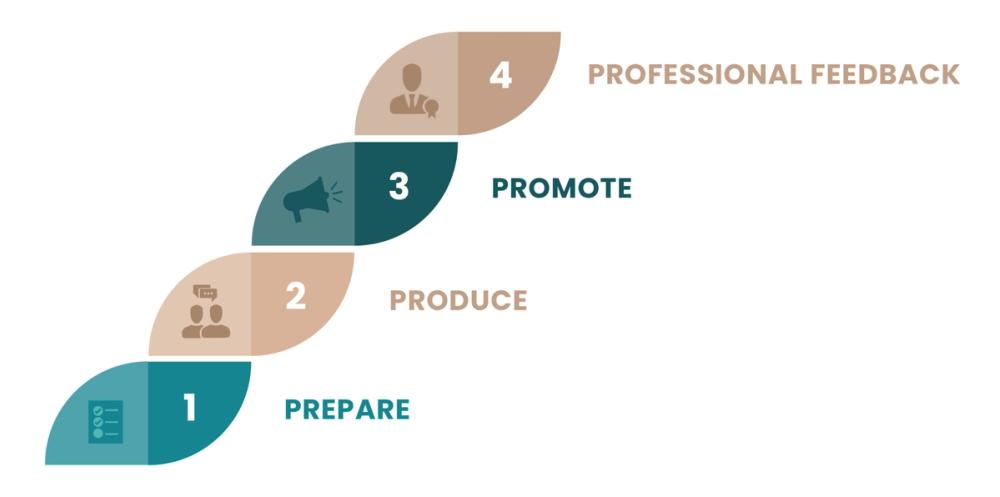
The WINE360 model I mentioned earlier includes four steps, Prepare, Produce, Promote and Professional Feedback.
This is the backbone of WinePod Direct, which is the service I provide to regions and producers to broadcast their stories and grow their impact.
In WinePod Direct, the first step is to understand the region’s objectives. I then use the Six Wine Stories model to capture their unique stories. The final result is very powerful and can be used to help the region towards its objectives over the following months or years. As well as this, they also get access to a host of other support, including best practice, done-for-you promotion resources and live support over the three month programme.
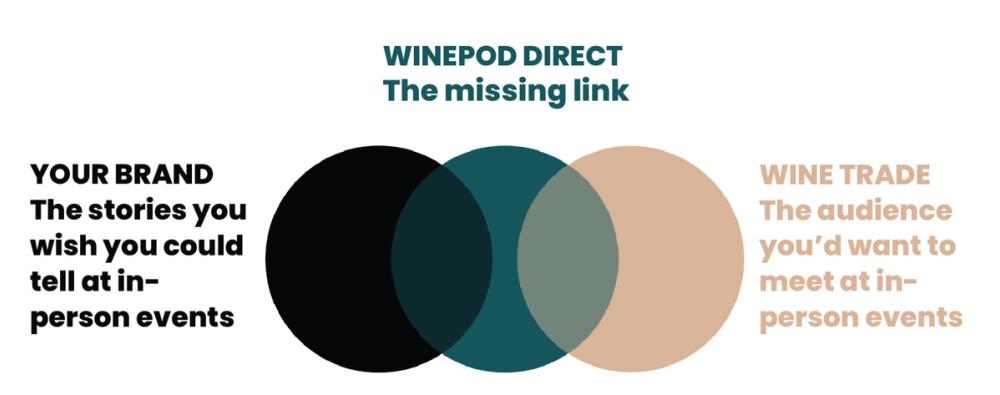
What do you see as being the key things you need to get right in a successful podcast?
This could easily be another article in itself. But I would recommend wine brands involve someone who knows the platform. Even if that’s just asking them questions to better your understanding before you record. There are platform specific nuances which will guide you in creating the best quality content and achieving the best outcomes.
One of these key differences is content length. If podcast quality is good, listeners will engage with longer podcast episodes. I have several episodes over an hour long and these are some of the best performing. That’s because podcasting comes into its own when used to tell big stories.
It’s been my experience that most wineries and regions have huge stories to tell. They have already ‘done the hard part’ in being interesting and having history. I think podcasting offers them an untapped opportunity to articulate the whole story and deliver it packaged to their target consumer.
What other support and advice can you offer wine producers?
I’ve just released an ever-expanding totally free set of resources that includes videos, podcasts, scorecards and reports. I want this to help wine brands reach new audiences and grow consumption among younger audiences. This can be accessed here. (please insert link: https://www.interpretingwine.com/resources-link-buyer)
Anything else to say?
I’ve just published a discussion document, which summarises my best thinking on some of the marketing headwinds faced by wine and the opportunity that audio offers. This can be accessed here.
- If you want to find out more about Virtual Wine Fair and how it works you can contact Lawrence Francis by email at hello@interpretingwine.com.
- You can find out more about Interpreting Wine here.
































